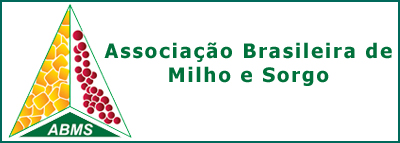ESTIMATIVA DA NECESSIDADE DE IRRIGAÇÃO NA CULTURA DO MILHO “SAFRINHA” EM SORRISO-MT POR MÉTODOS AGROCLIMATOLÓGICOS
DOI:
https://doi.org/10.18512/1980-6477/rbms.v15n1p73-85Keywords:
Zea mays L.Abstract
RESUMO - O milho “safrinha” é considerado uma cultura de alto risco devido à baixa disponibilidade hídrica no período em que é cultivado. Assim, o objetivo deste trabalho foi verificar o desempenho de dois modelos de estimativa de evapotranspiração de referência (ETo), visando a realizar o manejo da irrigação via balanço hídrico em três cenários com índices pluviométricos distintos no município de Sorriso-MT. O estudo foi realizado para uma área de 9,3 ha, utilizando-se dados climatológicos diários dos anos considerados médio, seco e úmido para estimativa da ETo pelos modelos de Hargreaves-Samani e Priestley-Taylor. Realizou-se o balanço hídrico para a cultura em sistema de irrigação por aspersão convencional com turno de rega fixo de três dias. Consideraram-se os coeficientes de correlação (r), determinação (r2), concordância de Willmott (d), desempenho (c) e estimativa do erro padrão (EEP) avaliando os modelos comparando-os com os valores estimados pelo método de Penman-Monteith (PM). Os modelos estudados apresentaram desempenhos “ótimo” e “muito bom” para os três cenários, porém não se mostraram sustentáveis. Geraram-se equações para validar o uso dos modelos estudados para as lâminas que superestimaram PM. O cenário seco apresentou a maior lâmina total (irrigação e precipitação efetiva), enquanto o chuvoso demandou menores lâminas de irrigação.
Palavras-chave: balanço hídrico, evapotranspiração, simulação, aspersão, Zea mays L.
ESTIMATE OF IRRIGATION NEED IN THE SECOND SEASON MAIZE CROP USING AGRO-CLIMATIC METHODS IN SORRISO/MT
ABSTRACT - Second season maize is considered a high-risk culture due to low water availability in the period in which is grown. The objective of this study was to evaluate the performance of two reference evapotranspiration (ETo) estimation models, aiming to carry out irrigation management, by water balance, in three scenarios with different rainfall indexes in Sorriso-MT. The study was conducted in an area of 9.3 ha using daily climatological data of the years considered average, dry and wet to estimate the ETo by the models of Hargreaves-Samani and Priestley-Taylor. The water balance was done by conventional sprinkler irrigation system with fixed irrigation interval of three days. Correlation (r) and determination (r²) coefficients, Willmott agreement (d), performance (c) and standard error estimate (EEP), were used to evaluate the performance of the models, considering the Penman-Monteith (PM) method as reference. The studied models presented performances classified as “great” and “very good” for the three scenarios, but they were not sustainable regarding the correct use of water. Equations were generated to validate the use of the studied models for the water depths that overestimated the PM values. The dry year demanded greater total water depths (irrigation and effective precipitation), while the rainy year demanded lower irrigation depths.
Keywords: water balance, evapotranspiration, simulation, sprinkler irrigation, Zea mays L.
Downloads
Published
How to Cite
Issue
Section
License
Authors retain copyright and grant the journal right of first publication with the work simultaneously licensed under the Creative Commons Attribution License that allows the sharing of work and recognition of the work of authorship and initial publication in this journal.
Authors are able to take on additional contracts separately for non-exclusive distribution of the version of the paper published in this journal (eg, in an institutional repository or publish as a book), with acknowledgment of its initial publication in this journal.
Authors are permitted and encouraged to post their work online (eg, in institutional repositories or on their website) at any point before or during the editorial process, as this may leadto productive exchanges, as well as increase the impact and citation of published work.



